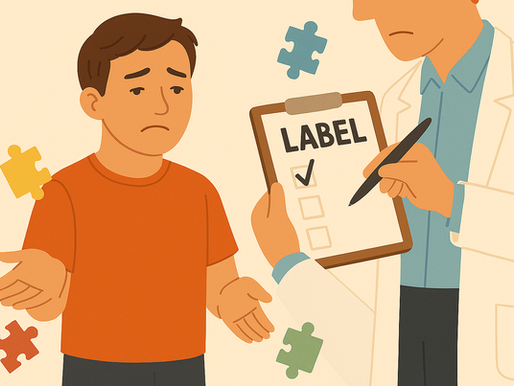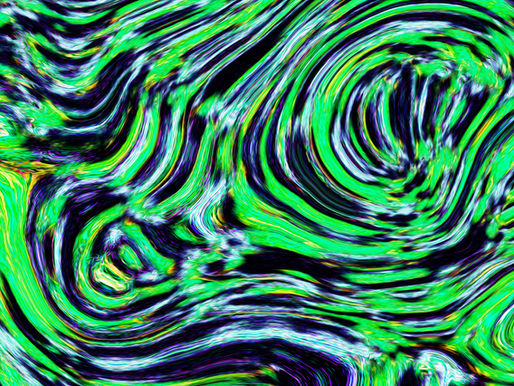top of page
Search
![The 5th edition, published in 2013, set out to simplify and modernise the nosology of autism-related disorders, replacing the DSM-IV’s cluster of Pervasive Developmental Disorders (PDDs) — Autistic Disorder, Asperger’s Disorder, Childhood Disintegrative Disorder, Rett’s Disorder[1] and PDD-Not Otherwise Specified (PDD-NOS) — with a single diagnosis: Autism Spectrum Disorder (ASD). The intent was, in principle, laudable: a spectrum captures gradation and avoids splits between “high-” and “low-functioning” labels. In practice, DSM-5 produced a conceptual flattening by collapsing important distinctions and introduced criteria so under-specified they undermine diagnostic coherence – creating a set of internal contradictions that have done more to muddy than to clarify diagnosis.](https://static.wixstatic.com/media/904f97_7ed4d390f69f44a3bee34406e457dba0~mv2.png/v1/fill/w_333,h_250,fp_0.50_0.50,q_35,blur_30,enc_avif,quality_auto/904f97_7ed4d390f69f44a3bee34406e457dba0~mv2.webp)
![The 5th edition, published in 2013, set out to simplify and modernise the nosology of autism-related disorders, replacing the DSM-IV’s cluster of Pervasive Developmental Disorders (PDDs) — Autistic Disorder, Asperger’s Disorder, Childhood Disintegrative Disorder, Rett’s Disorder[1] and PDD-Not Otherwise Specified (PDD-NOS) — with a single diagnosis: Autism Spectrum Disorder (ASD). The intent was, in principle, laudable: a spectrum captures gradation and avoids splits between “high-” and “low-functioning” labels. In practice, DSM-5 produced a conceptual flattening by collapsing important distinctions and introduced criteria so under-specified they undermine diagnostic coherence – creating a set of internal contradictions that have done more to muddy than to clarify diagnosis.](https://static.wixstatic.com/media/904f97_7ed4d390f69f44a3bee34406e457dba0~mv2.png/v1/fill/w_514,h_386,fp_0.50_0.50,q_95,enc_avif,quality_auto/904f97_7ed4d390f69f44a3bee34406e457dba0~mv2.webp)
When a Spectrum Becomes a Vacuum: How DSM-5 Broke Autism Diagnosis and Fed a Diagnostic Epidemic
A Simplification That Simplifies Nothing The 5 th edition, published in 2013, set out to simplify and modernise the nosology of autism-related disorders, replacing the DSM-IV’s cluster of Pervasive Developmental Disorders (PDDs) — Autistic Disorder, Asperger’s Disorder, Childhood Disintegrative Disorder, Rett’s Disorder [ 1 ] and PDD-Not Otherwise Specified (PDD-NOS) — with a single diagnosis: Autism Spectrum Disorder (ASD). The intent was, in principle, laudable: a spectrum
5 days ago8 min read


Diagnostic Stability of Autism Before the Concept of Spectrum
The question of how stable an autism diagnosis is over time has long been debated. While many families and clinicians view an autism diagnosis as lifelong, research suggests that diagnostic stability—how consistently a diagnosis persists over time—depends heavily on which diagnostic framework is used. Emerging evidence indicates that before the introduction of the broader ASD category in the DSM-5 (APA 2013), autism diagnoses were more stable and predictable. Before DSM-5: D
Nov 73 min read


Camouflage and Autism (1): Beyond the Autism-Specific Narrative
Over the past two decades, research on autism has expanded at an extraordinary pace. Studies on prevalence, lived experience, and...
Sep 217 min read


Autism Diagnosis Today (2): Dediagnosing
In the past two decades, our societies have become more fluent in the language of mental health. Public campaigns encourage people to...
Sep 55 min read


Regression in Autism (3):
In most cases, ASD is diagnosed between 15 and 30 months. Some children exhibit typical early development, only to lose acquired language and social skills between 15 and 30 months. These cases qualify as regressive autism.
However, there are instances of late onset autism where individuals appear to develop typically until adolescence or even adulthood before displaying symptoms consistent with autism. In such cases, an identifiable neurological insult, such as, e.g, herpes
Jul 107 min read


Regression in Autism (2):
Regression in autism, often seen within the first two years of life, represents a distinct subtype of autism that has sparked considerable scientific interest. While the exact causes of regression are still not fully understood, current research points to a combination of genetic, environmental, metabolic, immune, and neurological factors.
Jul 45 min read


Criticism of the Theory of Mind Deficit in Autism
The claim that autistic individuals lack Theory of Mind (ToM)—the ability to understand that others have thoughts, emotions, and...
Mar 283 min read


Development of Theory of Mind in Autism
Theory of Mind (ToM) is a critical aspect of social cognition and undergoes significant developmental changes from infancy to adulthood....
Mar 152 min read


More Myths about Autism:
‘Autistic individuals always say what they think / or what they want to say’ There is a common misconception that autistic individuals...
Sep 20, 20243 min read


Sophisticated echolalia:
Imitation as a Social Tool in Autism Though the broken mirror hypothesis predicts that autistic individuals should show severe...
Sep 4, 20242 min read


The second book in the ‘Autism: Becoming a Professional Parent’ series has been released
After examining sensory perception in autism in the first book, the newly released second instalment focuses on communication and...
Jul 5, 20242 min read


Narcissistic Personality Disorder and Autism (2):
Challenges in diagnosing Diagnosing Narcissistic Personality Disorder (NPD) can be difficult as individuals with this disorder often...
Apr 17, 20244 min read


Narcissistic Personality Disorder and Autism (1):
Overlapping symptoms and differences Narcissistic Personality Disorder (NPD) and ASD are two distinct condition. However, they share...
Mar 21, 20246 min read


Personality Disorders and Autism: (2)
Overlaps, prevalence and comorbidity Overlapping symptoms It is now recognised that ASD and personality disorders (PDs) have a variety of...
Feb 23, 20245 min read


Schizophrenia and Autism (1):
Two Spectra or Continua? Autism and schizophrenia are two complex neurodevelopmental disorders/conditions that have been extensively...
Sep 30, 20235 min read


Psychosis and Autism (2):
Prevalence and comorbidity Comorbidity , or the coexistence of two or more disorders, is common in both autistic individuals and people...
Aug 14, 20234 min read


Psychosis and Autism (1):
Overlapping symptoms and differences Psychosis Psychosis is not a diagnosis in and of itself but rather a cluster of symptoms present in...
Jul 28, 20236 min read


Autism & Dementia (3):
Similarities and differences in conceptualisation, diagnosis and research Similarities: ASD and Alzheimer’s disease (AD) are neurodevelopmental and neurodegenerative conditions that manifest themselves at different stages of life (two opposite ends of life span, i.e., childhood and old age) (Nadeem et al. 2021; Khan et al. 2016; Rhodus et al. 2020). According to the present trend, they both can be described as neurodivergent conditions. In fact, include both ASD and dementia
Jun 3, 20233 min read


Autism and Dementia: (2)
Overlaps in biological pathways, clinical features and behavioural expression Although Alzheimer’s disease (AD) and ASD are etiologically distinct conditions , there is growing evidence of significant overlaps in biological and neurological features, and behavioural expression of ASD and AD (and related dementias). Studies also suggest that there are common neurological pathways in both ASD and dementia, particularly involving the immune system and synaptic signaling. A gene
Apr 29, 20237 min read


Autism and Dementia: (1) Prevalence
- Hello, where are you? - I am at home. - At home? Where? - I have one home, in England. Why? What’s happened? - Why did you leave without saying ‘goodbye’? It was great when you and your daughter came to see me. We visited friends and had fun. I was preparing your farewell party, but you left. You could have said goodbye… Thus began my conversation with my childhood friend (B.). We have be
Mar 18, 20234 min read
bottom of page
.jpg)